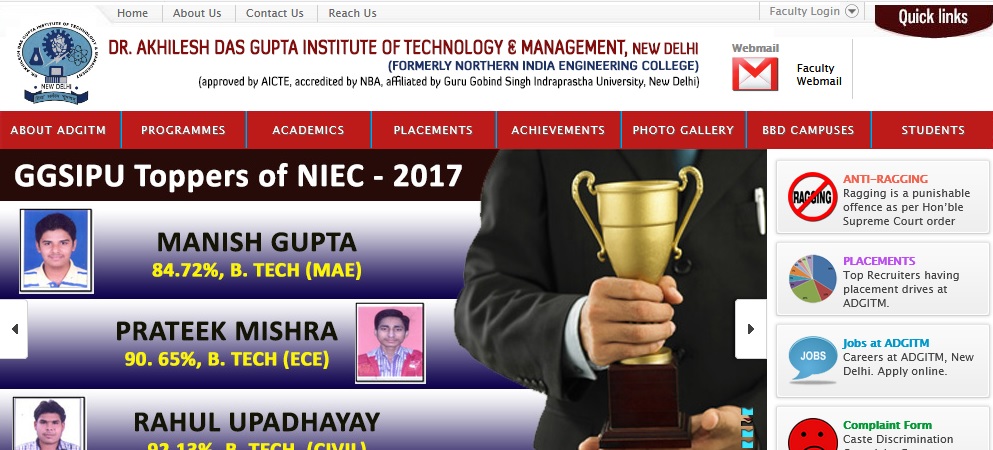Fluid Systems B.Tech Question Bank : niecdelhi.ac.in
Name of the College : Northern India Engineering College
University : Guru Gobind Singh Indraprastha University
Subject Code/Name : Fluid Systems
Dept : Mechanical Engineering
Degree : Bachelor of Technology
Sem: VI
Website : niecdelhi.ac.in
Document Type : Question Bank
Download Model Question Paper : https://www.pdfquestion.in/uploads/niecdelhi.ac.in/3358-fm%20Model%20Question%20Paper%201.docx
NIEC Delhi Fluid Systems Question Paper
Model Question Paper 1 :
Note: Attempt any five questions including Q. No. 1 which is compulsory.
Q1. How are the fluid machines classified?
Sol : Classification Based on Fluid Used
The fluid machines use either liquid or gas as the working fluid depending upon the purpose.
Related : NIEC Delhi LAN & Networking B.Tech Question Bank : www.pdfquestion.in/3359.html
The machine transferring mechanical energy of rotor to the energy of fluid is termed as a pump when it uses liquid, and is termed as a compressor or a fan or a blower, when it uses gas. The compressor is a machine where the main objective is to increase the static pressure of a gas. Therefore, the mechanical energy held by the fluid is mainly in the form of pressure energy.
Fans or blowers, on the other hand, mainly cause a high flow of gas, and hence utilize the mechanical energy of the rotor to increase mostly the kinetic energy of the fluid. In these machines, the change in static pressure is quite small. For all practical purposes, liquid used by the turbines producing power is water, and therefore, they are termed as water turbines or hydraulic turbines. Turbines handling gases in practical fields are usually referred to as steam turbine, gas turbine, and air turbine depending upon whether they use steam, gas (the mixture of air and products of burnt fuel in air) or air.

Q 4. Explain the construction of peltonturbinewith suitable diagram.
Sol : Introduction
The Pelton wheel turbine is a pure impulse turbine in which a jet of fluid leaving the nozzle strikes the buckets fixed to the periphery of a rotating wheel. The energy available at the inlet of the turbine is only kinetic energy. The pressure at the inlet and outlet of the turbine is atmospheric. The turbine is used for high heads ranging from (150-2000) m. The turbine is named after L. A. Pelton, an American engineer.
The water from the reservoir flows through the penstocks at the outlet of which a nozzle is fitted. The nozzle converts the total head at the inlet of the nozzle into kinetic energy. The amount of water striking the curved buckets of the runner is controlled by providing a spear in the nozzle. The spear is a conical needle which is operated either by a hand wheel or automatically in an axial direction depending upon the size of the unit.
The rotating wheel or circular disc is called the runner. On the periphery of the runner a number of buckets evenly spaced are fixed.
The shape of the buckets is of a double hemispherical cup or bowl. Each bucket is divided into two symmetrical parts by a dividing wall which is known as the splitter. The jet of water strikes on the splitter. The splitter then divides the jet into two equal parts and the water comes out at the outer edge of the bucket. The buckets deflect the jet through an angle between (160o-165o) in the same plane as the jet. Due to this deflection of the jet, the momentum of the fluid is changed reacting on the buckets. A bucket is therefore, pushed away by the jet.
The casing prevents the plashing of the water and discharges the water to tail race. The spent water falls vertically into the lower reservoir or tail race and the whole energy transfer from the nozzle outlet to tail race take place at a constant pressure. The casing is made of cast iron or fabricated steel plates.
To stop the runner within a short time, a small nozzle is provided which directs the jet of water on to the back of the vanes. The jet of water is called the “breaking jet “. If there is no breaking jet, the runner due to inertia goes on revolving for a long time.
Q5. What is cavitation? Write down the effects and precaution of cavitation?
Ans : Cavitation is defined the phenomenon of formation of vapour bubbles of a flowing liquid in a region where the pressure of the liquid falls below its vapour pressure and sudden collapsing of these vapour bubbles in a region of higher pressure . when the vapour bubbles collapse, a very high pressure is created. The metallic surfaces , above which these vapour bubbles collapse, is subjected to these high pressures, which cause pitting action on the surface . thus cavities are formed on the metallic surface and also considerable noise and vibrations are produced